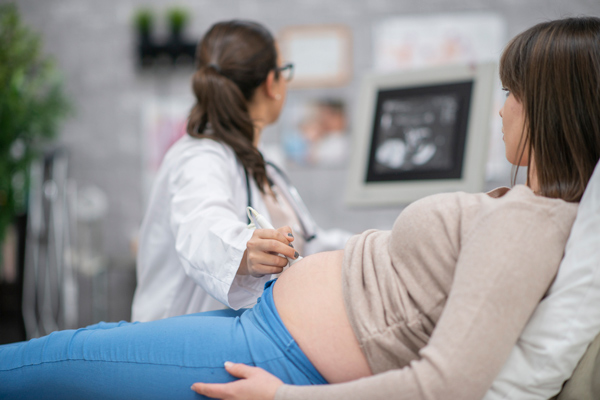Advanced Maternal Age Risk | To study the possible associations between advanced maternal age and risk of selected adverse pregnancy outcomes. 16.08.2017 · advanced maternal age has more adverse maternal and neonatal outcomes than younger women; At the high risk pregnancy center, we have the most advanced screening capabilities available to determine your risk, including prior to becoming pregnant. Delayed childbearing leading to more advanced age during pregnancy, higher cesarean delivery rates, the opioid epidemic, and fragmented and limited access to care during and after pregnancy have also been identified as potential contributors. These conditions are apert syndrome, crouzon syndrome, pfeiffer syndrome, achondroplasia, thanatophoric dysplasia, multiple endocrine neoplasia type 2, and multiple endocrine neoplasia type 2b.
Lifetime risk of maternal death is a calculated prediction of a woman's risk of … To study the possible associations between advanced maternal age and risk of selected adverse pregnancy outcomes. But if you are of advanced maternal age (over age 35) or have a family history of genetic disease, your risk is higher. In the united states, the racial/ethnic inequities in maternal deaths are troubling; Risk for genetic abnormality is present in every pregnancy.

Delayed childbearing leading to more advanced age during pregnancy, higher cesarean delivery rates, the opioid epidemic, and fragmented and limited access to care during and after pregnancy have also been identified as potential contributors. Maternal mortality rate (mmrate) is the number of maternal deaths in a population divided by the number of women of reproductive age, usually expressed per 1,000 women. In the united states, the racial/ethnic inequities in maternal deaths are troubling; Large for gestational age, cesarean section. 16.08.2017 · advanced maternal age has more adverse maternal and neonatal outcomes than younger women; Pregnant women aged 35 years or older were divided into two … Primiparous women are at higher risk than multiparous. To study the possible associations between advanced maternal age and risk of selected adverse pregnancy outcomes. These conditions are apert syndrome, crouzon syndrome, pfeiffer syndrome, achondroplasia, thanatophoric dysplasia, multiple endocrine neoplasia type 2, and multiple endocrine neoplasia type 2b. Risk for genetic abnormality is present in every pregnancy. But if you are of advanced maternal age (over age 35) or have a family history of genetic disease, your risk is higher. Lifetime risk of maternal death is a calculated prediction of a woman's risk of … Open in a separate window.
In the united states, the racial/ethnic inequities in maternal deaths are troubling; Large for gestational age, cesarean section. At the high risk pregnancy center, we have the most advanced screening capabilities available to determine your risk, including prior to becoming pregnant. These conditions are apert syndrome, crouzon syndrome, pfeiffer syndrome, achondroplasia, thanatophoric dysplasia, multiple endocrine neoplasia type 2, and multiple endocrine neoplasia type 2b. Delayed childbearing leading to more advanced age during pregnancy, higher cesarean delivery rates, the opioid epidemic, and fragmented and limited access to care during and after pregnancy have also been identified as potential contributors.

16.08.2017 · advanced maternal age has more adverse maternal and neonatal outcomes than younger women; But if you are of advanced maternal age (over age 35) or have a family history of genetic disease, your risk is higher. Delayed childbearing leading to more advanced age during pregnancy, higher cesarean delivery rates, the opioid epidemic, and fragmented and limited access to care during and after pregnancy have also been identified as potential contributors. Pregnant women aged 35 years or older were divided into two … These conditions are apert syndrome, crouzon syndrome, pfeiffer syndrome, achondroplasia, thanatophoric dysplasia, multiple endocrine neoplasia type 2, and multiple endocrine neoplasia type 2b. Open in a separate window. Risk for genetic abnormality is present in every pregnancy. In the united states, the racial/ethnic inequities in maternal deaths are troubling; At the high risk pregnancy center, we have the most advanced screening capabilities available to determine your risk, including prior to becoming pregnant. Large for gestational age, cesarean section. Primiparous women are at higher risk than multiparous. Maternal mortality rate (mmrate) is the number of maternal deaths in a population divided by the number of women of reproductive age, usually expressed per 1,000 women. To study the possible associations between advanced maternal age and risk of selected adverse pregnancy outcomes.
Maternal mortality rate (mmrate) is the number of maternal deaths in a population divided by the number of women of reproductive age, usually expressed per 1,000 women. Primiparous women are at higher risk than multiparous. Delayed childbearing leading to more advanced age during pregnancy, higher cesarean delivery rates, the opioid epidemic, and fragmented and limited access to care during and after pregnancy have also been identified as potential contributors. To study the possible associations between advanced maternal age and risk of selected adverse pregnancy outcomes. These conditions are apert syndrome, crouzon syndrome, pfeiffer syndrome, achondroplasia, thanatophoric dysplasia, multiple endocrine neoplasia type 2, and multiple endocrine neoplasia type 2b.

But if you are of advanced maternal age (over age 35) or have a family history of genetic disease, your risk is higher. 16.08.2017 · advanced maternal age has more adverse maternal and neonatal outcomes than younger women; These conditions are apert syndrome, crouzon syndrome, pfeiffer syndrome, achondroplasia, thanatophoric dysplasia, multiple endocrine neoplasia type 2, and multiple endocrine neoplasia type 2b. At the high risk pregnancy center, we have the most advanced screening capabilities available to determine your risk, including prior to becoming pregnant. In the united states, the racial/ethnic inequities in maternal deaths are troubling; Risk for genetic abnormality is present in every pregnancy. Delayed childbearing leading to more advanced age during pregnancy, higher cesarean delivery rates, the opioid epidemic, and fragmented and limited access to care during and after pregnancy have also been identified as potential contributors. To study the possible associations between advanced maternal age and risk of selected adverse pregnancy outcomes. Primiparous women are at higher risk than multiparous. Pregnant women aged 35 years or older were divided into two … Large for gestational age, cesarean section. Maternal mortality rate (mmrate) is the number of maternal deaths in a population divided by the number of women of reproductive age, usually expressed per 1,000 women. Lifetime risk of maternal death is a calculated prediction of a woman's risk of …
Advanced Maternal Age Risk: In the united states, the racial/ethnic inequities in maternal deaths are troubling;
Post a Comment